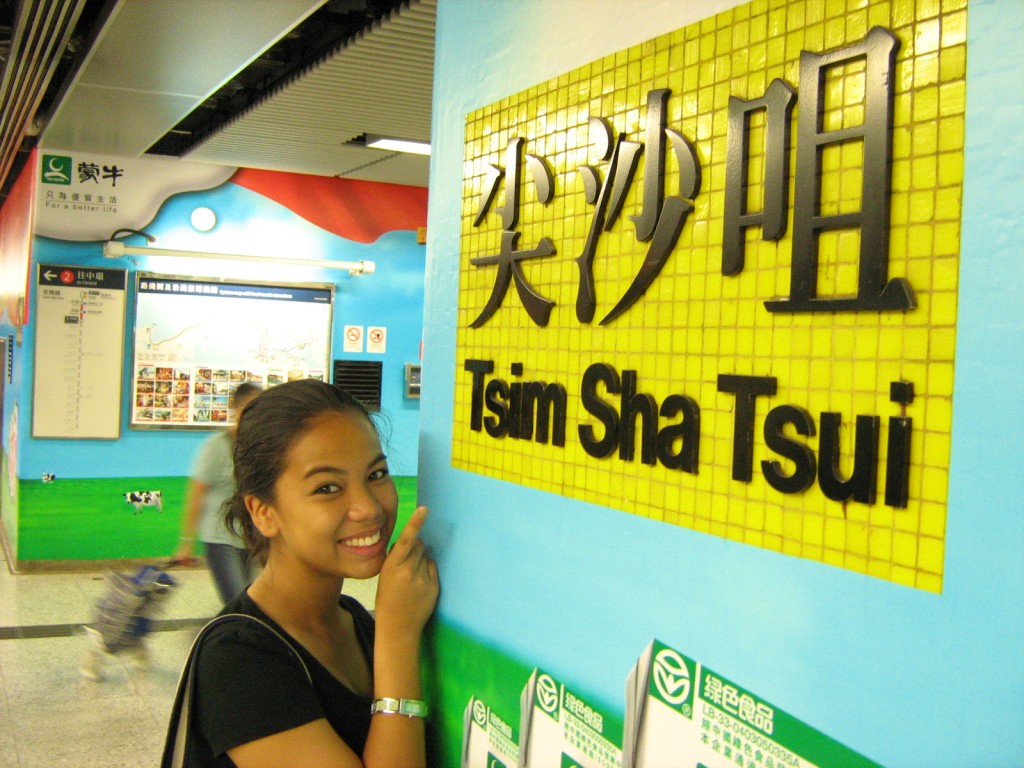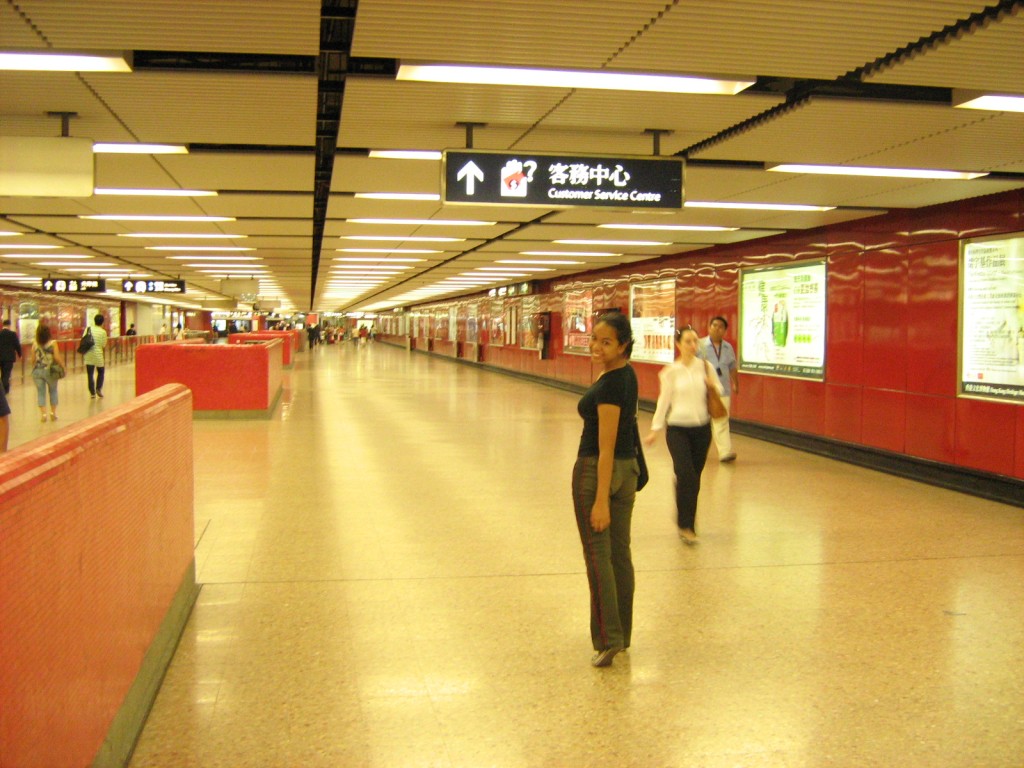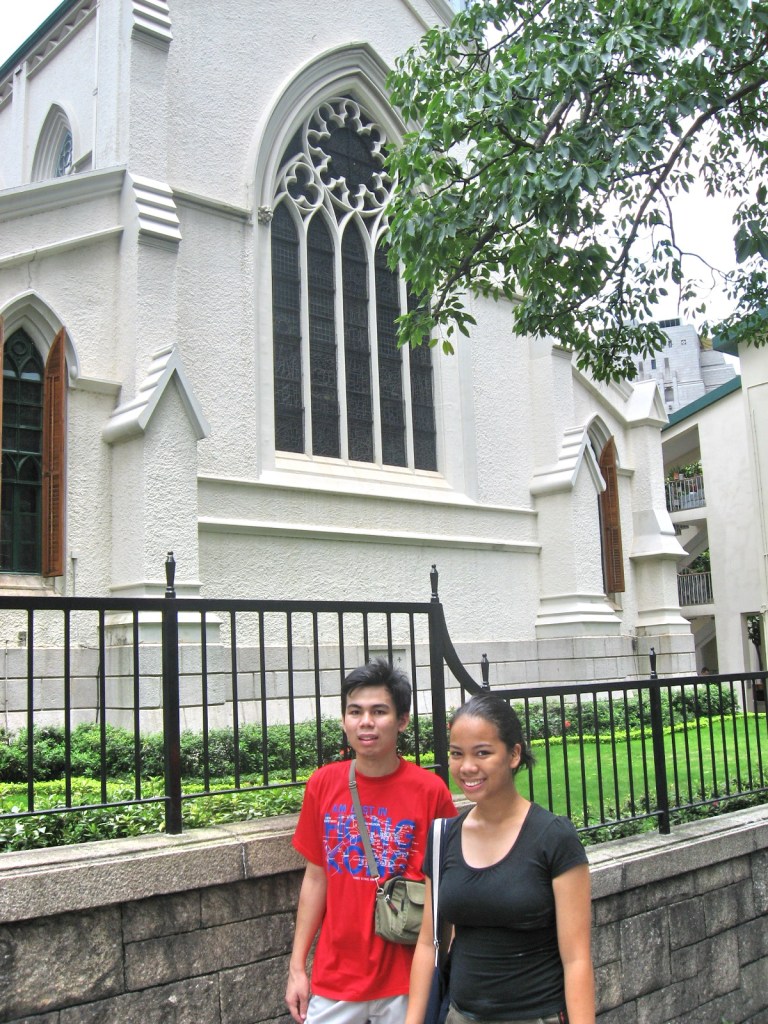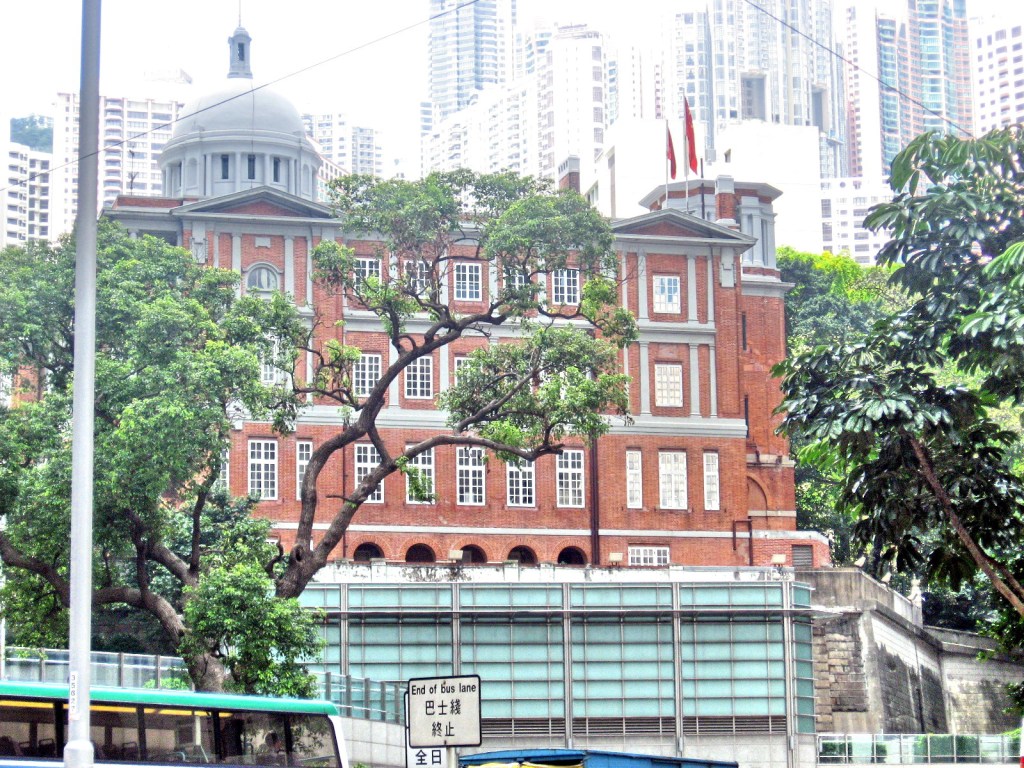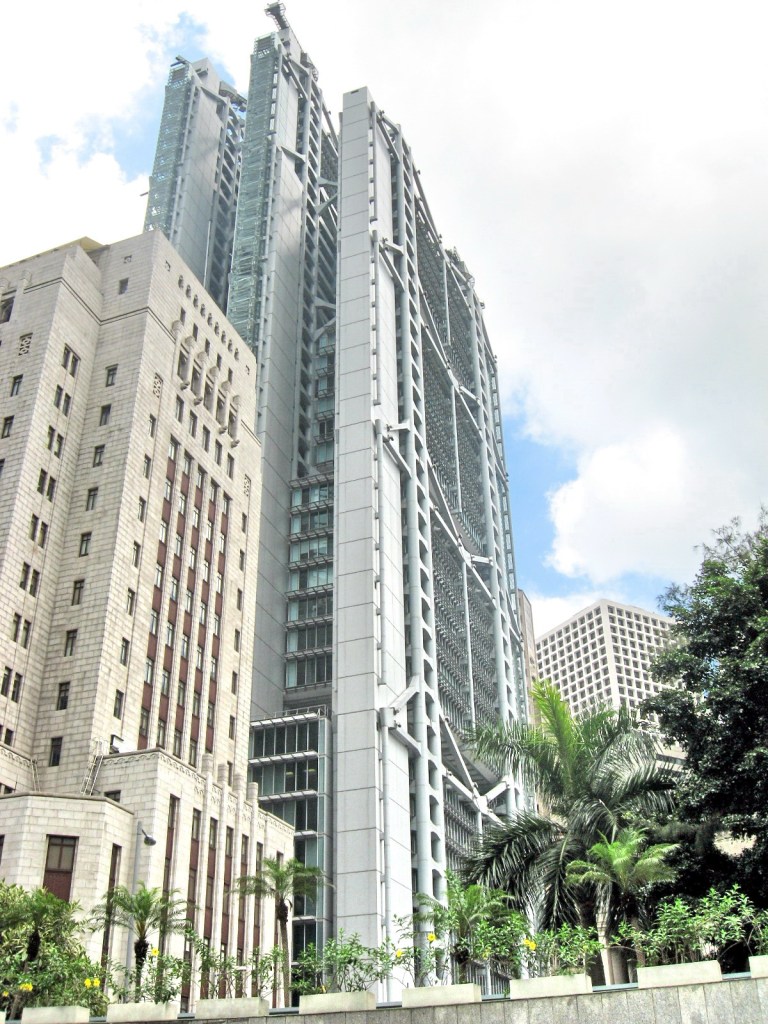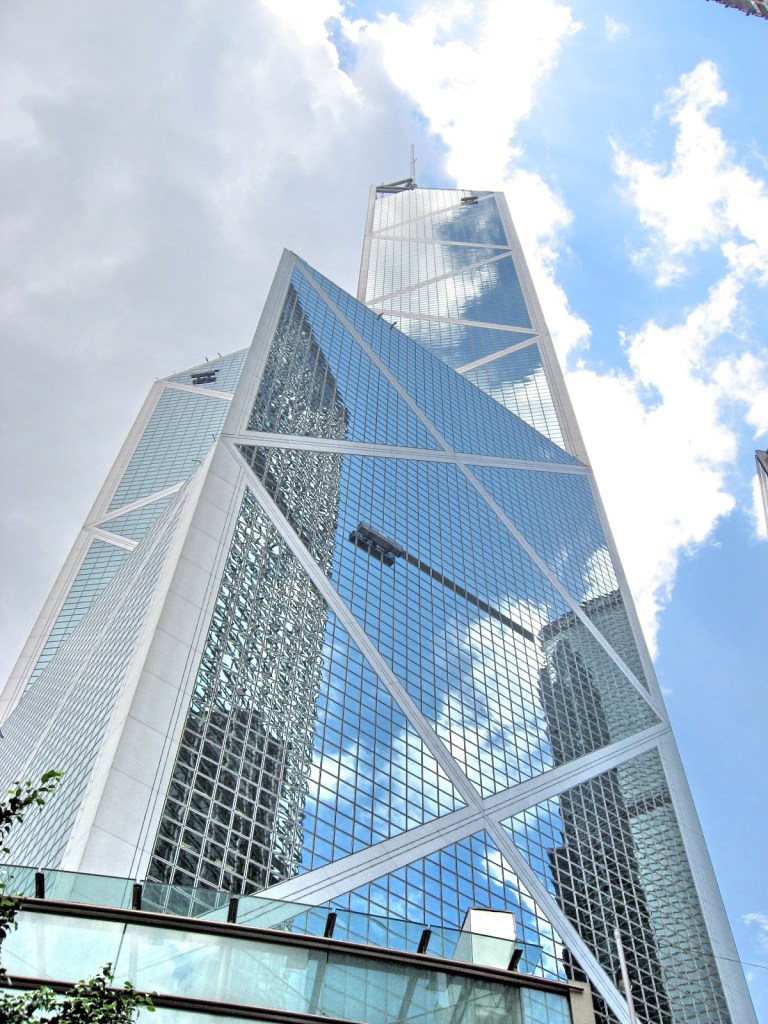After our breakfast at a MacDonald’s outlet along Nathan Rd., we all returned to our hotel and prepared for our day’s main activities – the Peak Tram in the morning and Ocean Park in the afternoon. We planned to all go the former via the very efficient Mass Transit Railway (MTR) system. From the hotel, we all walked all the way, from Kimberley Rd. to Nathan Rd. and, from there, to the nearby Tsim Sha Tsui MTR Station. Here, we took the MTR to Central MTR Station.
Upon our arrival at Central, we made our way to the J2 Exit and walked up to the ground level. It was a pleasant walk from Central to the Peak Tram Lower Terminus. Turning right, through Chater Garden (a gathering place for many of our Filipino kababayans), we crossed Queen’s Road Central and made our way up Garden Road. Along the way, we passed a few famous Hong Kong landmarks such as the Bank of China Tower and Citibank Plaza on our left and St John’s Cathedral on our right.
The cross-shaped, Early English and Decorated-Gothic styled St. John’s Cathedral (or the Cathedral Church of St. John the Evangelist), a declared monument since January 5, 1996. Located along Garden Road, it is the oldest surviving Western ecclesiastical building in Hong Kong and is believed to be the oldest Anglican church in the Far East. It was built in 1849 and houses 3 beautiful stained glass windows, as well as a collection of British military colors, standards and guidons. An eastern extension was added in 1873. During the Japanese occupation, the cathedral was used as a social club for the Japanese community. It suffered heavy damage during the war and most of the present interior and furnishings are post-war.
Next to the cathedral, along Battery Path, is the Former French Mission Building, built by Sir Henry Pottinger, the first governor of Hong Kong. This granite and red brick structure, completed between 1842 and 1843, is one of Hong Kong’s oldest surviving colonial buildings. Acquired by the French Mission in 1915, it was extensively rebuilt in 1917 and was finally sold back to the Hong Kong Government in 1953. Reputedly the location of the colony’s first government house, it has green shutters, black wrought-iron details and a chapel on the northwest corner, topped by a cupola, added by French Catholic missionaries. Today, this Neo-Classical styled building is used as the Hong Kong Court of Final Appeal and was declared as a declared monument on September 14, 1989.
Built in 1950, the 17-storey Old Bank of China Building, Hong Kong Building was, for some time, one of the masterpieces of Hong Kong architecture. Contemporary in style, it was completed only a year after the Communist Party came to power in China. The new party endeavored to make it one of the grandest buildings in Hong Kong and, at one point, it towered more than 20 feet over the neighboring Hong Kong and Shanghai Bank Building (HSBC), which was their goal.
No longer home to the Bank of China, the attractive building is – ironically – now one of the shortest in Hong Kong’s Central District, was replaced in the 1990s by I.M Pei’s stunning Bank of China Tower. However, during its heyday, the old building served not only as bank headquarters but also as a way to encourage Hong Kong citizens to disregard their colonial rulers and pledge allegiance to China. It is said that during the 1960s, loud speakers were placed on the exterior of the building to broadcast “patriotic” messages to locals.
The Old Bank of China was designed by P & T Architects and Engineers Ltd., established in 1868. Also known as Palmer and Turner, the group has, throughout the decades, designed a number of other well-known Hong Kong landmarks, including the Hong Kong and Shanghai Bank (Bank of China’s rival) and a number of other office buildings, hotels, and condominiums worldwide.

